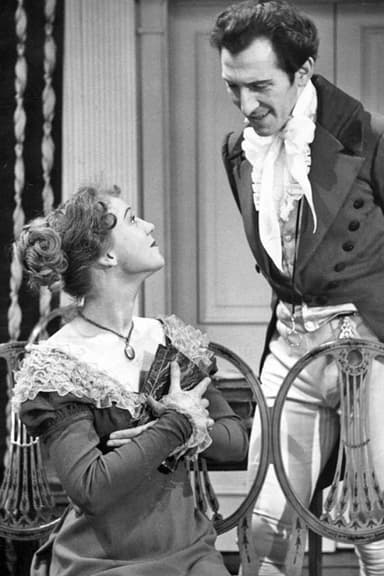
Pride and Prejudice
1995 • Drama • TV-14
Set in England in the early 19th century, Pride and Prejudice tells the story of Mr and Mrs Bennet's five unmarried daughters after the rich and eligible Mr Bingley and his status-conscious friend, Mr Darcy, have moved into their neighbourhood. While Bingley takes an immediate liking to the eldest Bennet daughter, Jane, Darcy has difficulty adapting to local society and repeatedly clashes with the second-eldest Bennet daughter, Elizabeth.
Why you should read the novel
Jane Austen's Pride and Prejudice offers an unmatched reading experience, allowing you to engage directly with her razor-sharp wit and insightful social commentary. The novel's sparkling dialogues, internal monologues, and incisive descriptions of Regency-era society provide depth and nuance that any screen adaptation can only strive to replicate. It's through Austen's own words that you'll truly understand the motivations and inner worlds of Elizabeth Bennet, Mr. Darcy, and the unforgettable supporting cast.
Reading the novel immerses you in the language, details, and subtle character developments that have made Pride and Prejudice a literary classic for over two centuries. Austen masterfully constructs every scene, revealing evolving relationships and the shifting winds of romance, pride, and societal expectation in ways only prose can fully express. From ironic narration to epistolary interludes, the book weaves a rich tapestry of emotion and understanding.
While the TV series brings the story to life with performances and visuals, it inevitably skips over or condenses plot points and character subtleties. By reading the original novel, you gain access to Austen's brilliant narrative voice and the full complexity of her story—rewarding every reader with layers of humor, wisdom, and piercing social insight that are often lost in adaptation.
Adaptation differences
One major difference in the 1995 TV adaptation is how it visualizes and sometimes expands scenes that are only implied or summarized in Austen's novel. For instance, the iconic 'wet shirt' scene with Mr. Darcy, which is not present in the book, is a creative addition for television, designed to heighten romantic tension and capitalize on visual storytelling.
The pacing and structure of the adaptation also diverge from Austen’s original. While the novel allows for thoughtful reflection and detailed exploration of character motivations through narrative and Elizabeth’s inner thoughts, the TV series must rely on dialogue and actor expressions. This occasionally leads to simplifications or omissions of background information and shifts in emphasis among plotlines and secondary characters.
Furthermore, some side characters and subplots are handled differently. The television series may condense or exclude scenes—such as those detailing Charlotte Lucas's pragmatic marriage to Mr. Collins or Lydia's reckless behaviors—in order to streamline the story for episodic format and time constraints. This can result in a loss of some narrative depth and social criticism present in the novel.
Lastly, the rich, ironic narrative voice of Jane Austen is largely absent in the adaptation. While the television series captures core events and dialogue, viewers miss much of the wit, humor, and observational insight embedded in the prose—especially Austen’s use of free indirect speech to convey character thoughts and the narrator’s dry commentary. This subtlety is a key delight of reading the book, setting it apart from even the most faithful visual retellings.
Pride and Prejudice inspired from
Pride and Prejudice
by Jane Austen









